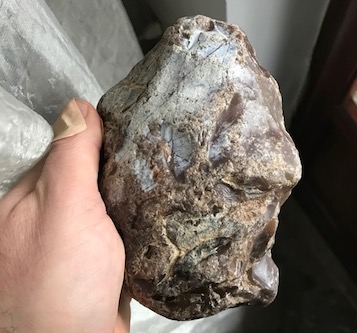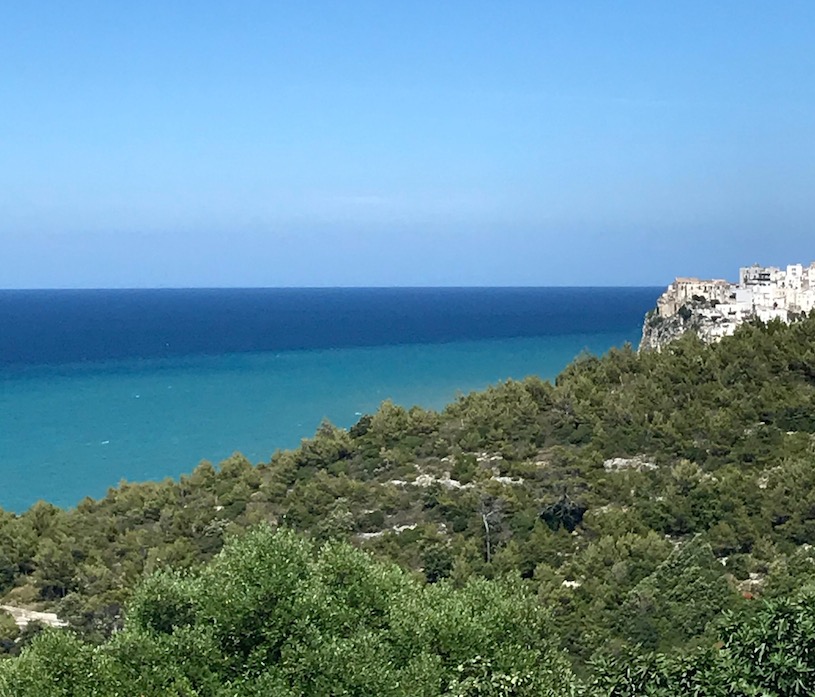"Man, in my opinion, was intelligent then as now, progress is exclusively technological."Pietro Gaietto, private mail of 25 January 2015
The discovery of a beautiful sculpture once again tells us about human intelligence, its sensitivity, intention and necessity of symbolic representation. The threshold of the human begins about 2.5 million years ago and, according to other sources, even earlier. Homo, over the millennia, in all the species now extinct, has assimilated from reality, reworked, repeated, intentionally enhanced, many signs-symbols in the representation of images and figures. Although the functions, religious and sacred rituals of the paintings and sculptures found remain unknown, the lines of what these works represent, even if stylized, are very clear.
If we try to enter with our imagination into the world of Homo, we will find ourselves immersed in the wild and primeval nature that offered them all the suggestions and deepest impressions. Man has always reacted to the external world and has always progressed as a living being through the observation of natural phenomena. It is the elements that surround his life and transform his outer and inner universe that interest him, such as light, the mystery of birth, life and death and burial, cold and heat, weather events, the sense of community, hunting and fertility, diseases and their treatments, infant mortality, loneliness, wars between tribes, nomadism, the search for beauty through the production of objects, also with the function of embellishing the body.
Among the activities of the original man is significant the production of sound: in addition to percussion, it also included the melodic sound. Ancient flutes have been found, it seems built by Neanderthals, like the flute of Divje Babe in Slovenia.
The sculpture found in Rodi Garganico has all the features, as science has reconstructed it from the skeletal finds discovered over time, of a face of Homo Sapiens Neanderthalensis.
In the light of new scientific research, the Neanderthal appears to be a man of advanced intelligence, possessing a high lithic technology, with a complex and advanced social behavior. His intelligence was in dialogue with that of Homo Sapiens Sapiens, given the period of coexistence. The intelligence of Homo sapiens Neanderthalensis may have been underestimated by science for a long time, precisely because of its physical appearance, but modern research attributes to Neanderthal a great mental capacity. This sculpture is proof of this.
We owe what we are able to do to men hundreds of thousands of years ago. We find the same magical suggestions, the same ancestral fears in ourselves, inherited directly from the first extraordinary men who discovered the universe and represented their world, the first world, the world of their origins.
It is widely demonstrated by artistic iconography, archaeology and anthropology that some symbols and lines with different styles, social behaviors and customs are repeated over the millennia more or less in the same way or with the same functions, even at distances geographically impossible for antiquity. One has the impression that the author of this sculpture has observed and assimilated the real image, reworking it mentally, and then reproduce it with lines and signs within the codes of a language that is neither casual nor banal, but strongly communicative towards his community and posterity.
Let's hazard some hypotheses about the symbology of the head.
Our sculpture probably had magical religious functions unknown to us.
It could represent the features of a deceased person. In the populations with the most ancient uses that we know to represent the head means, for example, to preserve the memory of the deceased, to remember him, to exalt the memory, continuing to have a sort of afterlife relationship with the deceased who in turn granted protection from the afterlife. For example, in the early Etruscan burials, in the canopies, the deceased was represented only with the head. Those terracotta artifacts served as a lid for the urns. The Etruscan heads reproduced in a generic and coarse way, but always with expression, the somatic traits of the deceased.
The head and skull worship rituals are present from Africa to Europe, Asia and practically all over the world. Also in Italy, for instance, if you think of the rite of the "Capuzzella" at the cemetery of the Fontanelle in Naples or of the Anime Pezzentelle, always in Naples (with a real adoration of the skull of a deceased, chosen among many, with a particular ritual). Examples of rites and adoration of the head, in different ways and styles of representation are widespread everywhere
A characteristic feature of the head found in Rodi Garganico is the vertical slit (or closed) eye. Could the oblique eye and the open mouth have the meaning of a dissociation between life and death? The eye of this work could be closed, or very narrow, while the open mouth is the symbol of an action, of an emission of sound, or song, of a call, of a breath. The spirit of the deceased speaking? A supernatural sound coming from a non-earthly dimension? We will never know.
In the African people Fang, originally from Gabon, Central Africa, the wonderful ritual masks often appear with closed eyes and open mouths. In Fang masks, the dissociation between the closed eye and the open mouth is underlined by the physical distance in the body of the work; in fact, the mask is elongated in appearance to move the eyes away from the mouth. This type of mask is always associated with the action of dance, music and sacrifice. During the Fang religious service, someone wears the mask, but the sorcerer's deep and disturbing voice comes from outside the field, far from the mask.
In some very rare reliquaries Mbulu-Viti Kota, Gabon, statues were discovered representing two faces looking in opposite directions, just like many Paleolithic sculptures. One of the two faces has an open mouth and slit eyes, while the second face is represented without a mouth and with round eyes wide open.
The head of Neanderthal that I found in the surface station in the autumn of 2015, always a few tens of meters from the mouth of the stream Romandato, point Cucchiara to Rodi Garganico (FG), is really extraordinary. Observing this sculpture, also through the use of alternative forms of lighting, such as the candle and the fire, one can deduce a great expressive force in the features of the face, even in its simplicity.

Fig.1 Anthropomorphic flint sculpture. It represents a head of Homo Sapiens Neanderthalensis with no forehead or chin. sharp nape partially broken by rolling, oblique vertical eye and open mouth.
Found at the mouth of the Romandato Torrent, Rodi Garganico, Foggia, Italy.
Middle Paleolithic, Mousterian Civilization, between 80,000 and 30,000 years ago.

Fig.2 Gargano with Peschici in the background.
Description of the work
The work, in size and shape, as well as being easily transported, was carved so that it could be exhibited, placed and placed to be observed, probably venerated. The precise workmanship meant that the base was almost flat, however suitable for the function of being exposed. The work is in flint and for the features represented it is a head of Homo Sapiens Neanderthalensis. In height it measures 14.07 cm and in width 11.06 cm. The head has a sharp nape, partially broken by rolling, which in other heads of Homo Sapiens Neanderthalensis has been interpreted as a cap, but that could be a hairstyle in a bunch. Exactly as it is found in other Neanderthal heads, also in our case the top of the head, beyond the skull cap, has been finely carved and thinned and therefore it should be the representation of a headdress.
The representation was made in the absence of forehead and chin, as any Sapiens type of Neanderthal. The oblique vertical eye has a meaning that is not known. Just as the symbolism of the open mouth appears mysterious. The open mouth of some primitive populations today is a form of greeting.
The era: Middle Palaeolithic, final Mousterian civilization. Between 80 and 30 thousand years ago.
Among the most famous hooded heads there are the Venus of Savignano and a small Venus of Balzi Rossi, but some others, only human heads, have been found by Pietro Gaietto in the mountains of Liguria and some on Menhir anthropomorphic Carnac, Brittany.
Stefano Taglietti
Composer and teacher
Copyright©2000-2019 by Paleolithic Art Magazine, all rights reserved.